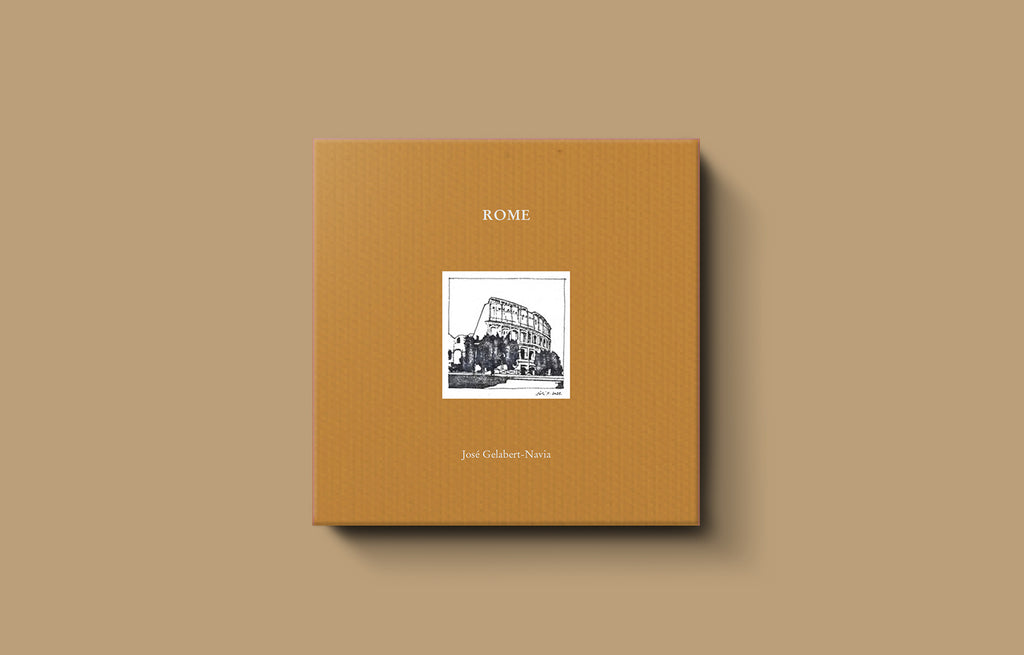
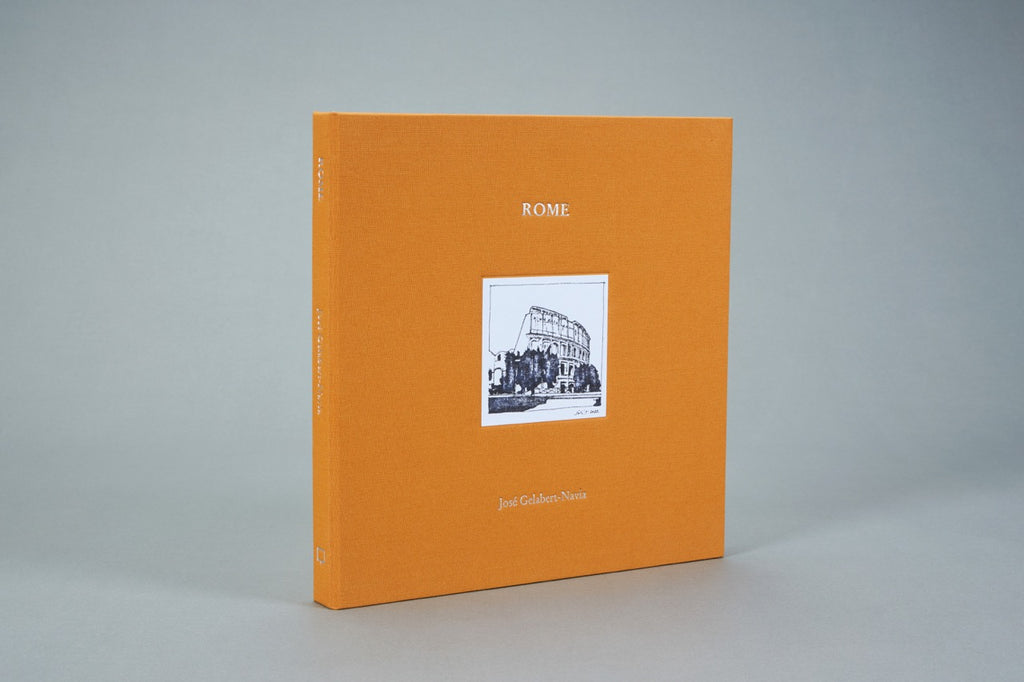
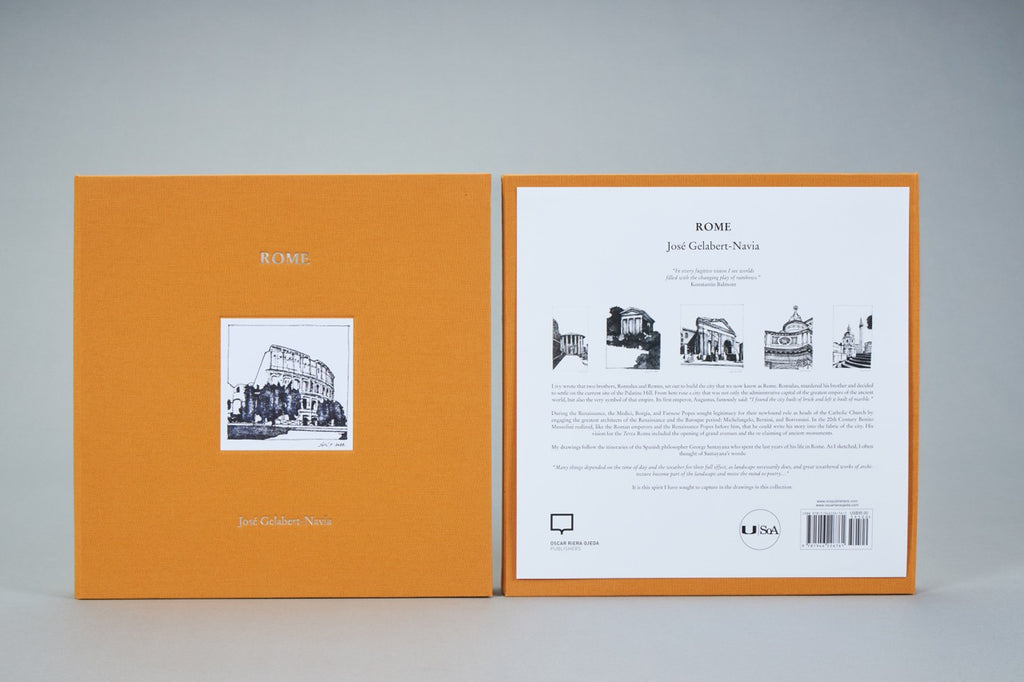
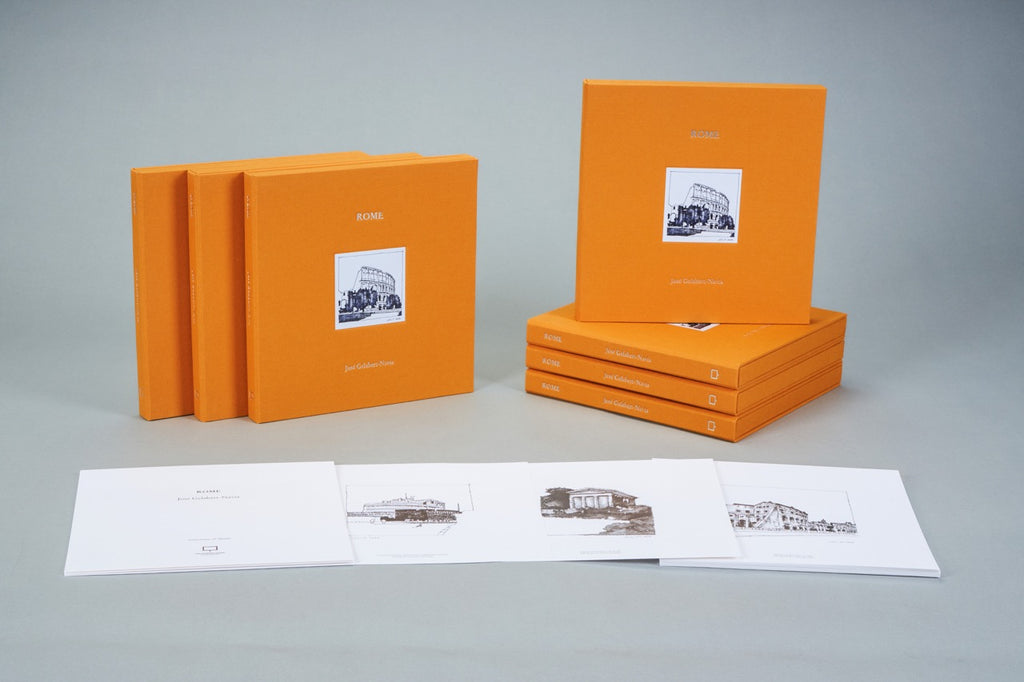
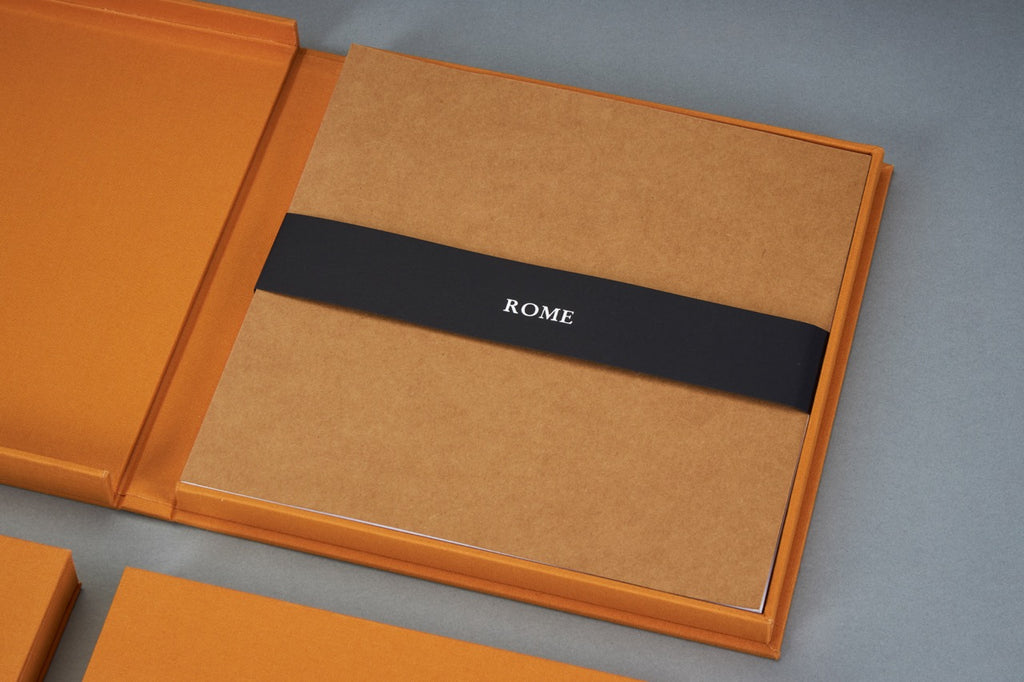
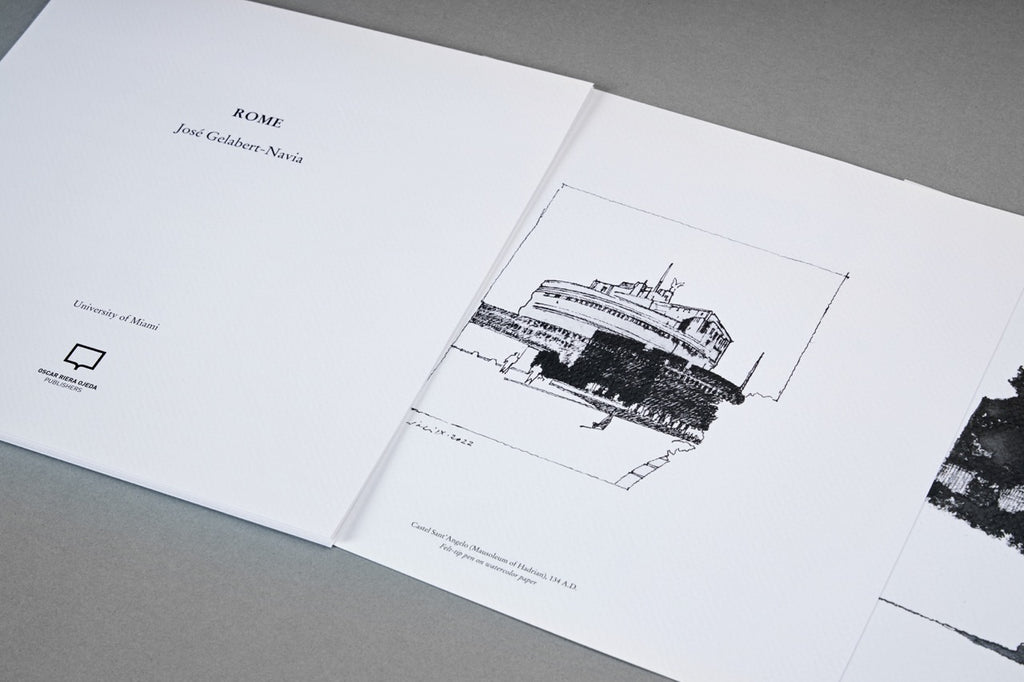
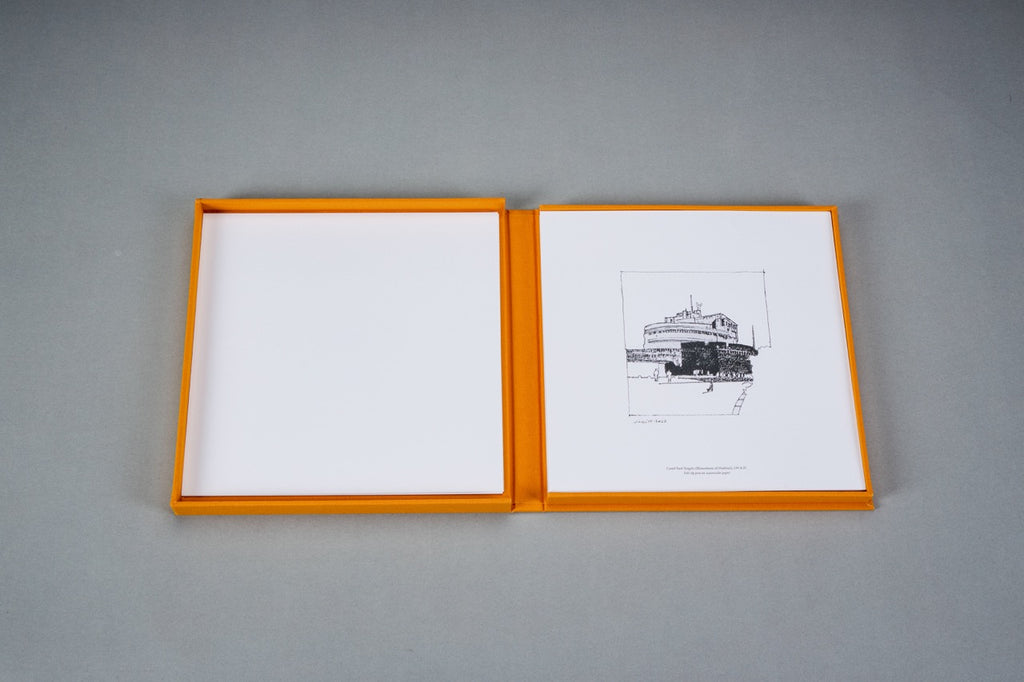
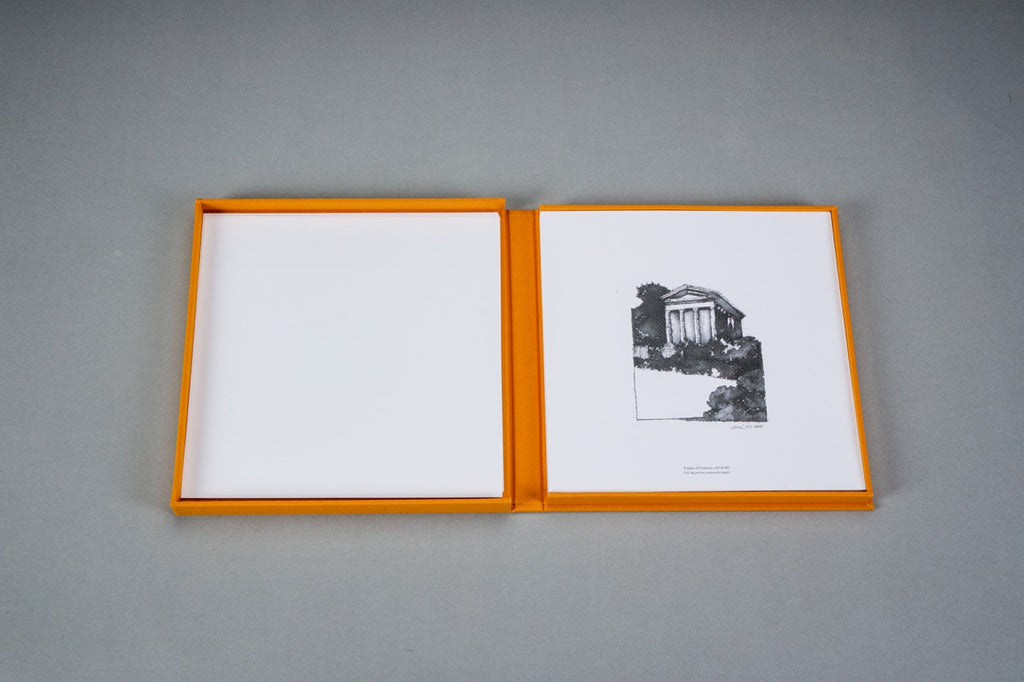
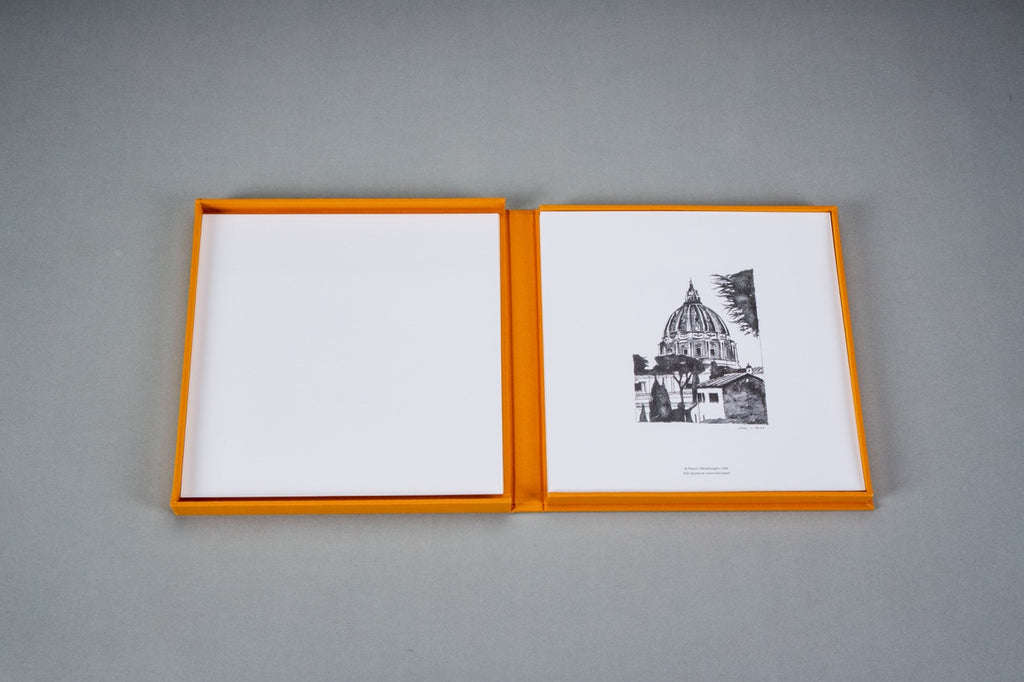
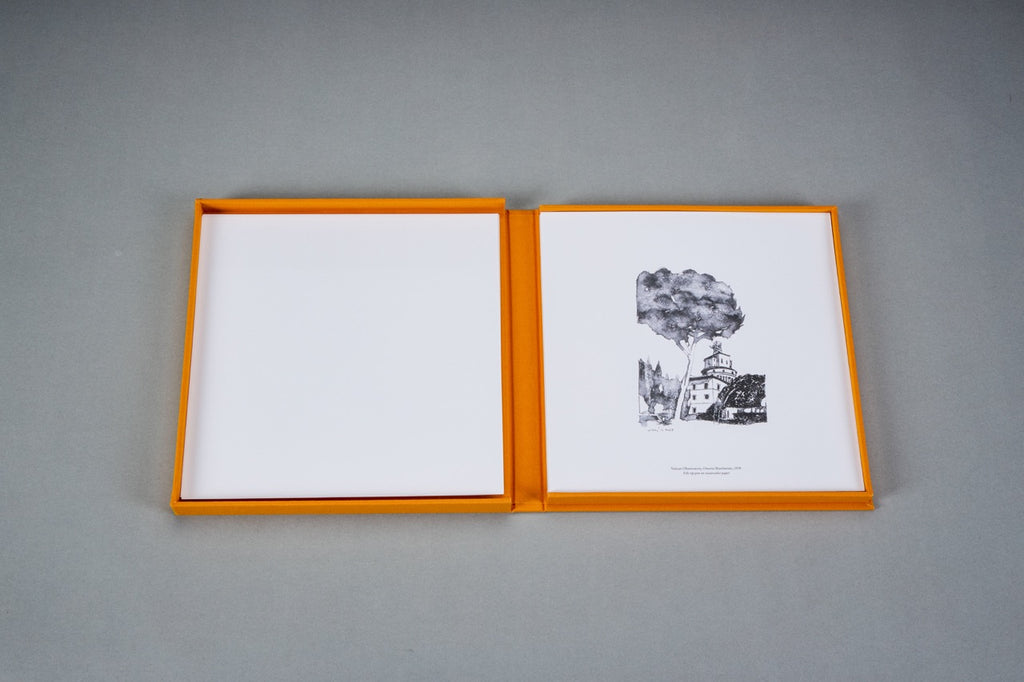
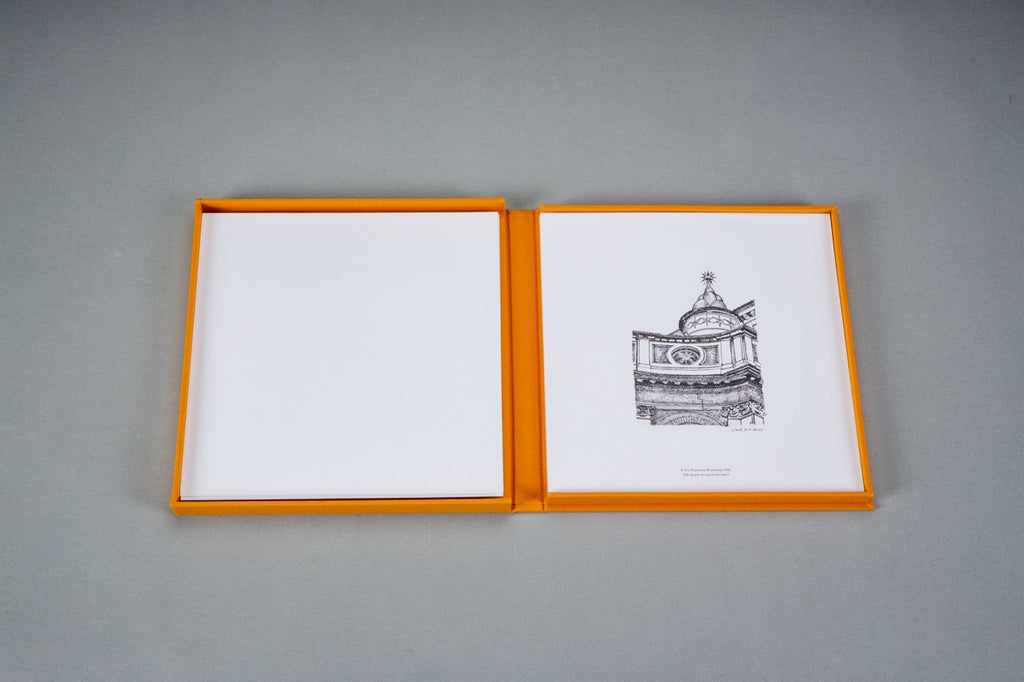
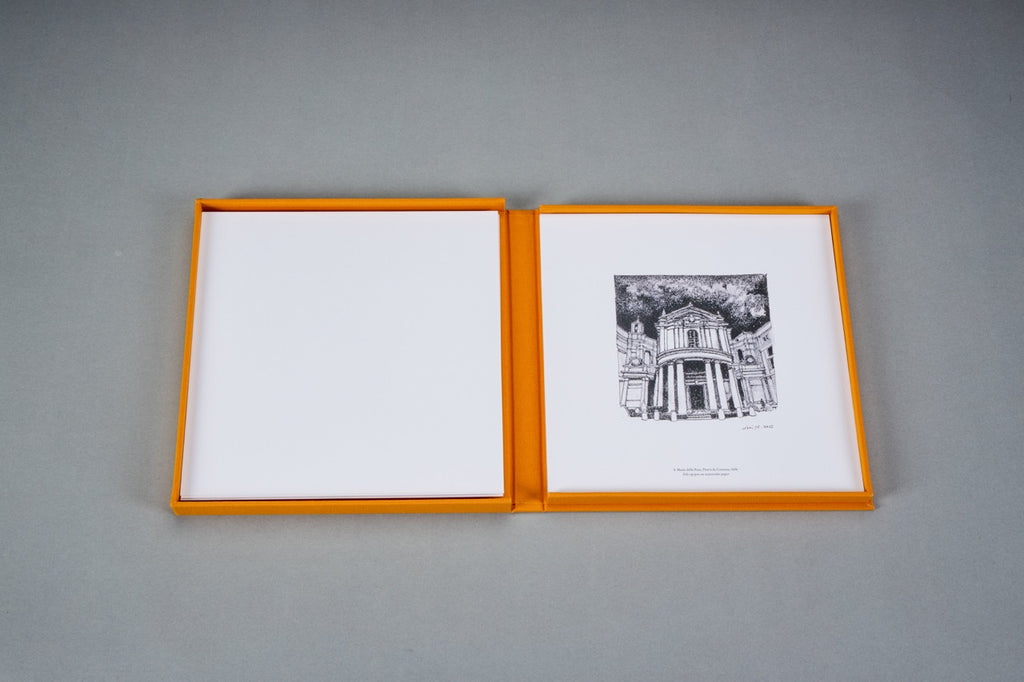
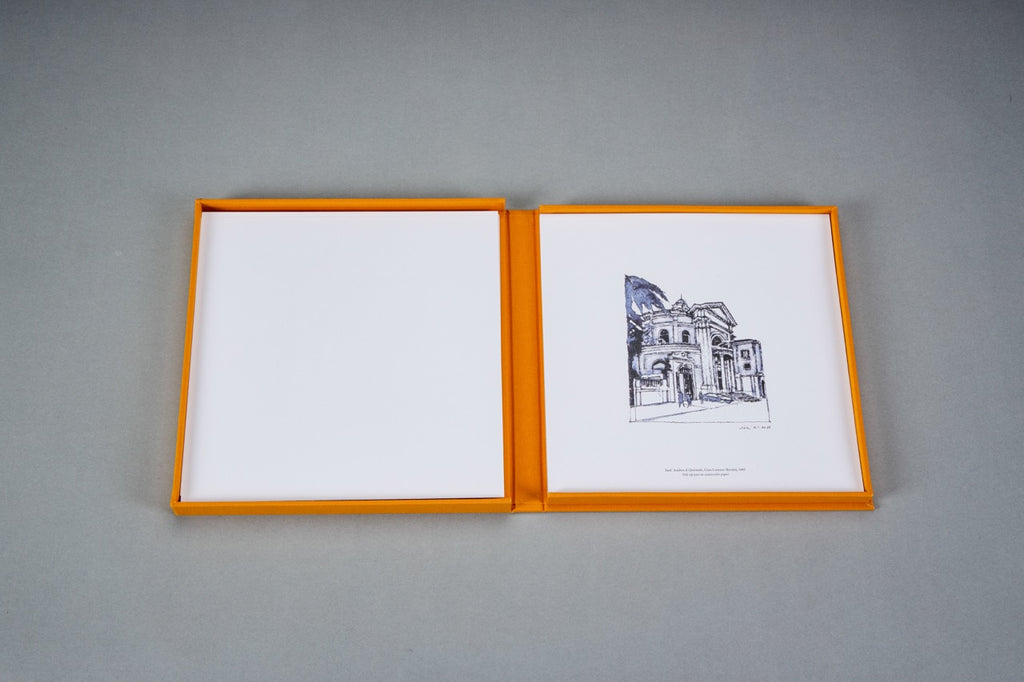
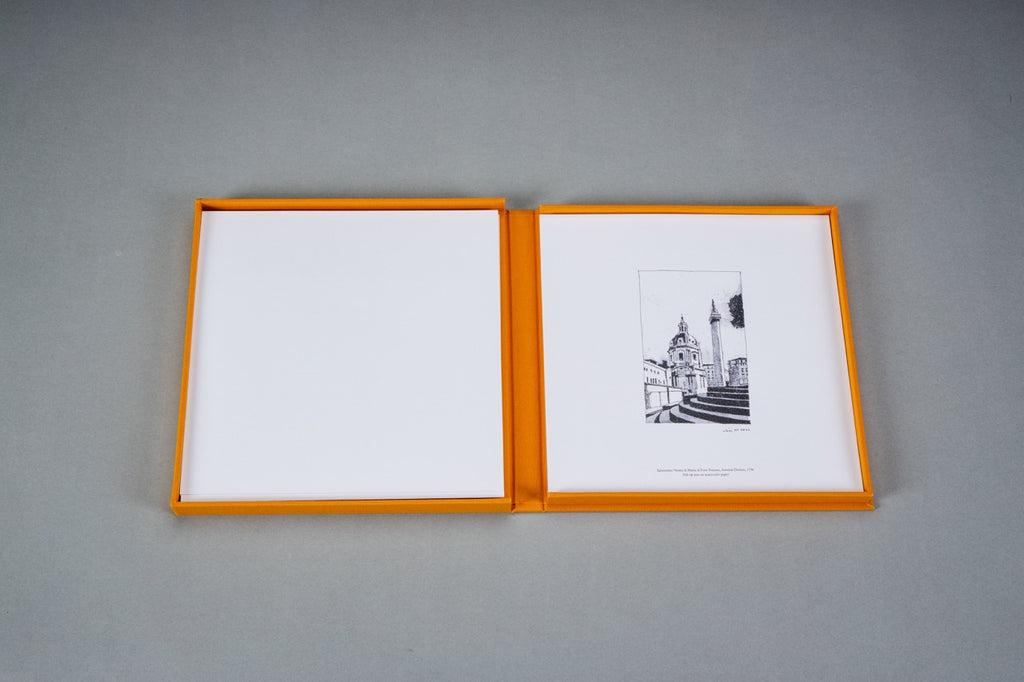
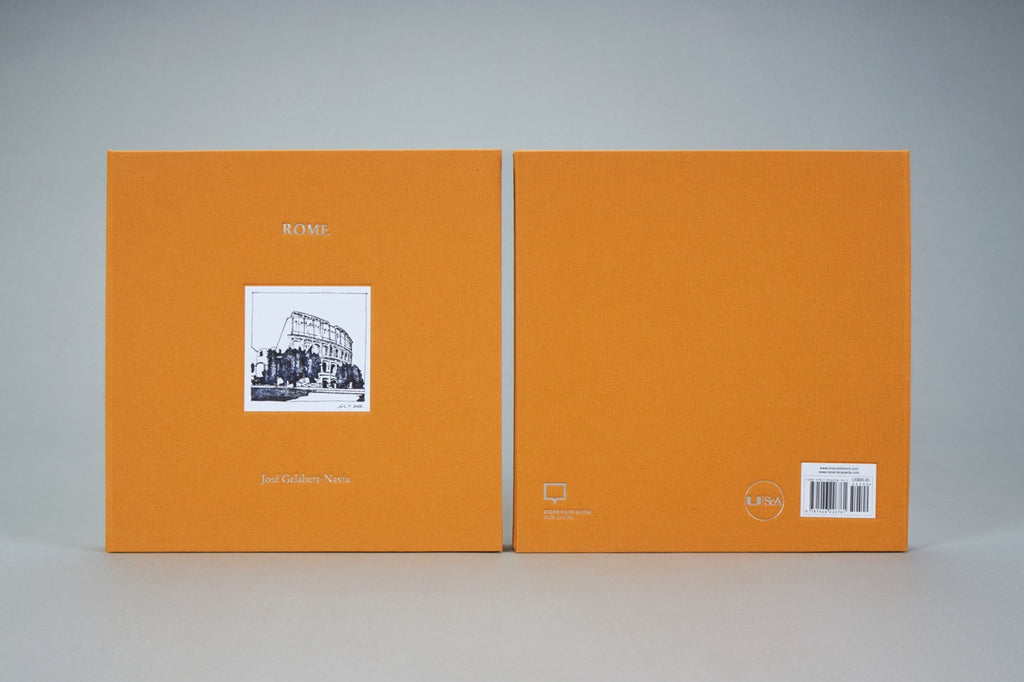
“As I sketched I often thought of Santayana’s words: “Many things depended on the time of day and the weather for their full effect, as landscape necessarily does, and great weathered works of architecture become part of the landscape and move the mind to poetry, not to pedantic criticism.””
Livy wrote that two brothers, Romulus and Remus, set out to build the city that we now know as Rome. Romulus, who had murdered his brother, decided on the current site of the Palatine Hill. From here rose a city that was not only the administrative capital of the greatest empire of the ancient world, but also the very symbol of that empire. Augustus famously said: “I found the city built of brick and left it built of marble.”
During the Renaissance, the Medici, Borgia, and Farnese Popes sought legitimacy for their newfound role as heads of the Catholic Church by engaging the greatest architects of the Renaissance and the Baroque period: Michelangelo, Bernini, and Borromini. In the 20th Century Benito Mussolini realized, like the Roman emperors and the Renaissance Popes before him, that he could write his story into the fabric of the city. His vision for the Terza Roma included the opening of grand avenues and the re-claiming of ancient monuments.
The Spanish philosopher George Santayana spent the last years of his life in Rome. I would invariably follow his itineraries. As I sketched I often thought of Santayana’s words:
“Many things depended on the time of day and the weather for their full effect, as landscape necessarily does, and great weathered works of architecture become part of the landscape and move the mind to poetry, not to pedantic criticism.”
It is this spirit I have sought to capture in the drawings in this collection.
Rome: José Gelabert-Navia
Book Size: 8.86 in x 8.86 in
Format: Square
Pages: 25
Language: English
Illustrations: 20
Edition/ISBN: Clamshell box (978-1-946226-76-1)
